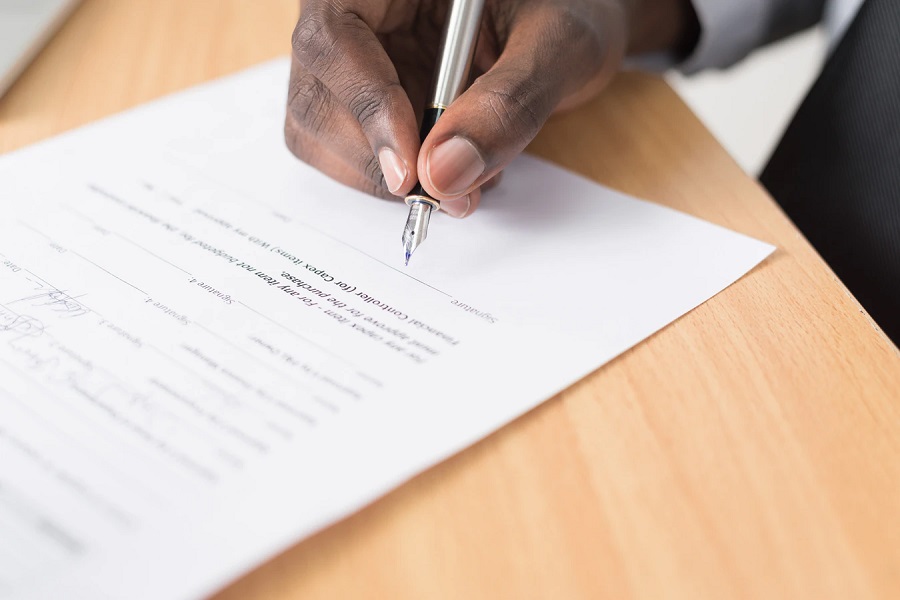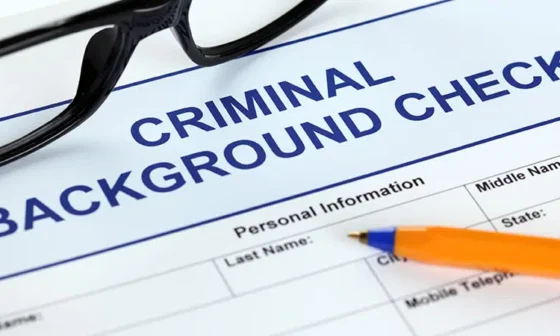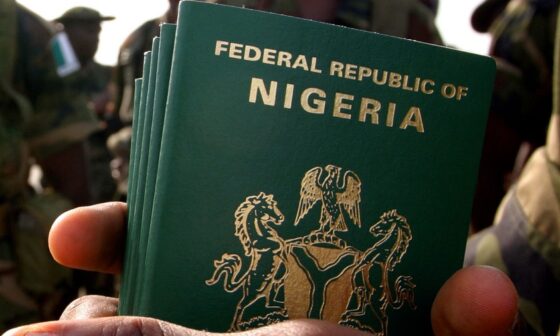Traveling can be an exciting and enlightening experience, but it is often necessary to obtain formal permission, particularly when traveling for official, academic, or personal purposes with kids. I recall writing a letter of permission for my niece to travel on an international trip with her school. The procedure was painstaking, and I learned the value of a well-written letter in ensuring her journey went smoothly. In this article, I’ll give a step-by-step guide, recommendations, and a template to help you write an effective letter of permission to travel.
What Should Be Included in a Letter of Permission to Travel?
When writing a letter granting permission to travel, it is critical to include certain crucial aspects to ensure the request is clear, full, and compelling. Here’s a full list of what to include:
#1. Personal Details
Your personal information adds context and authenticity to the letter. This section should contain:
- Full Name: Use your complete legal name to accurately identify who is granting permission.
- Example: “My name is Sarah Johnson.”
- Address: Please include your complete residential address as a point of contact and identification.
- Like this one: “I reside at 123 Maple Street, Springfield, IL 62704.”
- Contact Information: Please provide your phone number and email address for any future correspondence.
- Like this: “You can contact me at (555) 123-4567 or sarah.johnson@example.com.”
Providing your personal information ensures that the receiver understands who you are and how to contact you if necessary.
#2. Travellers’ Information
Details about the traveler are critical for identifying and determining the authenticity of the trip. Include the following.
- Full Name of the Traveller: The legal name of the individual who will be traveling.
- Like this one: “This letter grants permission for my son, John Doe, to travel.”
- Relationship to You: Explain your relationship with the traveler to clarify your authority in providing permission.
- Like this: “John Doe, born on March 15, 2008, is my son.”
- Passport or identifying Details: Include your passport number and any other relevant identifying information.
- Example: “John’s passport number is 123456789.”
These facts assist in authenticating the traveler’s identity and your authorization to issue permission.
#3. Travel Dates and Destinations
Clear information regarding travel dates and destinations eliminates ambiguity about the extent of the permission.
- Dates of Travel: Enter the exact dates of departure and return.
- Like this: “John will be traveling from July 10th to July 20th, 2024.”
- Destinations: Make the destination(s) obvious.
- For instance, “The trip will be to Paris, France.”
Providing particular dates and destinations aids in determining the duration and extent of the permission.
#4. The purpose of travel
Explain why you are traveling and why it is vital. This context can help you get the necessary permissions.
- Reason for Travel: Provide a brief explanation of why the travel is required.
- Like this: “John will be attending an educational exchange program organized by his school, which is a vital part of his academic development.”
Specifying the reason for the travel provides a clear justification for the request.
Advertisements
#5. Contact Information
Reiterating your contact information at the end of the letter ensures that the recipient understands how to contact you if they have any further questions or require verification.
- Phone Number and Email: Include a valid phone number and email address.
- Like this one: “Should you require any further information, please do not hesitate to contact me at (555) 123-4567 or sarah.johnson@example.com.”
#6. Supporting Documents
Attaching relevant papers increases credibility and aids in the verification of the information presented in the letter. Include:
- Copies of Passports or ID Cards: To verify the traveler’s identification.
- Like this: “Attached are copies of John’s passport and my driver’s license.”
- Travel Itinerary: A complete itinerary for the trip, including flight information, accommodations, and scheduled activities.
- Like this: “Included is the detailed itinerary outlining the travel schedule, accommodation details at the Hotel de Paris, and the daily activities planned by the exchange program.”
- Official Forms: Any official consent forms or documentation mandated by authorities or institutions.
- Like this: “Enclosed are the official consent forms required by the school and the travel agency.”
Providing these papers helps to substantiate your request and makes the verification process go more smoothly.
How to Write a Letter of Permission to Travel
#1. Understand the purpose and requirements
Understanding why the letter is necessary and the exact needs is critical for writing an effective letter. Various scenarios require varying amounts of detail and formality:
- Minor Travelling with a Non-Parent: When a minor travels without their parents, a permission letter confirms that the guardians are aware of and consent to the trip. This is especially critical for overseas travel since authorities require documentation of permission to avoid child kidnapping.
- Employee Travelling for Business: For business trips, the letter should typically include the reason for the trip, such as attending a conference, seeing clients, or receiving training. Employers must formally acknowledge and permit the travel.
- Students Travelling for Educational Purposes: Schools or educational institutions frequently want extensive information regarding the trip, its educational value, and assurances of safety and monitoring.
Knowing the precise criteria allows you to modify the content and tone accordingly, ensuring that all relevant information is covered.
#2. Include essential personal and trip details.
A complete letter of permission to travel should include all of the relevant information to effectively express the purpose and scope of the trip. Here are the main components:
Advertisements
- Personal Information: Your full name, address, and contact information should be clearly mentioned. This establishes who is granting permission.
- Like this: “My name is Sarah Johnson, residing at 123 Maple Street, Springfield, IL 62704. You can contact me at (555) 123-4567 or sarah.johnson@example.com.”
- Travel Details: Provide the travel dates, destinations, and purpose of the trip. Being precise about this information avoids misconceptions and promotes transparency.
- Example: “I am writing to grant permission for my son, John Doe, to travel to Paris, France, from July 10th to July 20th, 2024, for an educational exchange program organized by his school.”
- Traveler’s Information: Include the traveler’s full name, relationship to you, and any pertinent identifying information, such as passport numbers if applicable. This is critical for identity and verification purposes.
- Like this: “John Doe, born on March 15, 2008, passport number 123456789, is my son.”
Providing these facts beforehand helps to create a clear and full picture for the receiver, allowing for a seamless approval process.
#3. Be clear and specific in your request.
To avoid uncertainty, permission letters should be clear and explicit. Here’s how to do that:
- State the Purpose Clearly: Start by explaining why you’re traveling. Explain why permission is required and what the purpose of the travel is.
- Example: “This trip is essential for John’s educational development as it includes participation in workshops, cultural exchanges, and language immersion programs.”
- Provide Context: Include any relevant background information that supports the reason for the travel. This lets the recipient understand how important and urgent the request is.
- Example: “The educational exchange program has been organized by Springfield High School in collaboration with École Internationale de Paris, offering students an invaluable opportunity to learn about French culture and history firsthand.”
Being precise and specific ensures that the receiver understands the request and its relevance, which is critical for obtaining acceptance.
#4. Attach relevant documents
Attaching supporting papers increases credibility and aids in the verification of the information presented in the letter. Here’s what to include:
- Copies of Passports or Identification Cards: These documents establish the traveler’s identification.
- Like this: “Attached are copies of John’s passport and student ID card.”
- Travel Itinerary: A detailed itinerary outlines the trip’s schedule, including travel information, accommodations, and scheduled activities.
- Like this: “Included is the detailed itinerary outlining the travel schedule, accommodation details at the Hotel de Paris, and the daily activities planned by the exchange program.”
- Official Forms: Fill out and attach any official forms requested by authorities or institutions.
- Like this: “Enclosed are the official consent forms required by the school and the travel agency.”
These documents provide the required information and facts to back up your request, making it easier for the receiver to grant permission.
#5. Use polite, formal language
Maintaining a polite and formal tone is critical in a permission letter. It demonstrates respect for the recipient’s authority and time. Here’s how to organize it:
- Polite Salutation and Introduction: Begin with a courteous greeting and a brief explanation of the letter’s aim.
- Like this one: “Dear Principal Smith, I hope this letter finds you well. I am writing to request your permission for my son, John Doe, to travel to Paris, France.”
- Polite and Respectful Language: Throughout the letter, show your gratitude for their consideration.
- Examples include: “I kindly request that you grant permission for my son to travel, as this trip is a vital part of his educational development and personal growth. Your consideration in this matter is greatly appreciated.”
A courteous tone not only improves the professionalism of the letter but also influences the recipient’s decision.
#6. Provide your contact information for verification.
Including your contact information ensures that the recipient can reach you if they have any more questions or require verification. This creates a sense of trust and fosters conversation.
- Contact Information at the End: Include your contact information at the end of the letter.
- Like this one: “Should you have any questions or require additional information, please feel free to contact me at (555) 123-4567 or sarah.johnson@example.com.”
- Availability for Follow-Up: Please indicate your availability for follow-up talks or clarifications.
- Example: “I am available to discuss this further at your earliest convenience and can provide any additional documentation if required.”
Providing explicit contact information reassures the receiver of your availability and readiness to collaborate, making it easier for them to grant the request.
By following these steps, you may write a well-structured, concise, and compelling letter of permission to travel that includes all relevant data and has a better chance of being accepted.
Sample Letter of Permission to Travel
Here’s a template you can tailor to your needs:
[Your name]
[Your address]
[City, State, Zip Code].
[email address]
[Date]
[The recipient’s name]
[Recipient’s title]
[Recipient’s address]
[City, State, Zip Code].
Dear [recipient’s name],
I’m writing to give permission for [Traveler’s Name], my [relationship], to travel to [place] from [start date] to [end date] for [reason of travel].
[Traveler’s Name] will be traveling with [accompanying person/organization] and staying at [accommodation information]. The trip is planned for [short explanation of the purpose, such as educational exchange, business conference, etc.].
Please locate the enclosed documents for your reference:
- A copy of [Traveler’s Name]’s passport.
- Detailed itinerary.
- Contact details for the accompanying person/organization.
If you need any additional information, please do not hesitate to contact me at [your phone number] or [your email address].
Thank you for paying attention to this topic.
Sincerely,
[Your name]
Example
Here’s an example.
Letter of Authorization to Travel from Employer
April 12, 2050.
Samuel Mitchell
Case Officer
The embassy
456 Radiant Road
Luminous Lane, NY 01234.
To whom it may concern:
I’m writing to confirm that our employee, Ms. Savannah Rodriguez, is scheduled to travel to Canada on behalf of Globe Enterprise International.
This company-authorized travel is critical for guaranteeing efficient business operations. Her responsibilities include arranging meetings, overseeing project implementations, and simplifying workflow.
Her travel itinerary is scheduled to begin on and end on May 15-30, 2050. During this time, she will be completely focused on her work commitments.
We sincerely request that all essential courtesy be shown to Ms. Rodriguez during her travels on the above days. Please do not hesitate to contact our offices if you require any additional information or clarification regarding her travel plans.
Thank you for paying attention to this matter.
Yours sincerely.
Shannon McGregor
Managing Director
Globe Enterprise International
How Formal Should My Letter Be?
The tone of your letter should be formal and courteous. Here’s how to maintain an appropriate amount of formality:
- Respectful Language: Use respectful and courteous language throughout your letter.
- Examples include: “Dear Principal Smith, I hope this letter finds you well.”
- Professional Tone: Use a professional tone and avoid casual language or slang.
- Like this one: “I am writing to request your permission for my son, John Doe, to travel to Paris, France.”
- Formal Structure: Use a formal letter format that includes a clear introduction, body, and conclusion.
- As an example: “Thank you for considering this request. I look forward to your positive response.”
Using formal and courteous language shows respect for the recipient’s authority and helps you make your request effectively.
How Long Should My Letter Be?
A letter of permission to travel should be brief but detailed. Aim for a one-page letter that includes all relevant material and eliminates superfluous information.
- Concise Information: Include only the details that are necessary for the request.
- As an illustration: “This letter grants permission for my son, John Doe, to travel to Paris, France, from July 10th to July 20th, 2024, for an educational exchange program.”
- Clear and Direct Language: Use simple language to express your needs simply.
- Examples include: “John will be traveling with his school group, and this trip is vital for his academic growth.”
- Avoid Unnecessary Details: Do not include anything that is not essential to the travel request.
- Like this: “Please find attached copies of John’s passport and the travel itinerary.”
Keep the letter succinct so that the receiver can quickly understand and process your request, increasing the likelihood that it will be approved.
By following these principles, you can guarantee that your letter of permission to travel is full, concise, and convincing, enhancing your chances of gaining the essential approvals for a successful travel experience.
Key Takeaways
- Customize your letter to match the recipient’s individual needs, whether it’s a school, employer, or government authority.
- Provide detailed information about the traveler and the itinerary to ensure clarity and avoid misunderstandings.
- State your request clearly and include the necessary context to help the receiver understand the importance of the permission.
- Include any documents that support your request and confirm the traveler’s identity and purpose of travel.
- If you do not receive a response within a reasonable timeframe, please send a courteous follow-up to check that your request is being processed.
Conclusion
Writing a letter granting permission to travel does not have to be difficult. By following these steps and utilizing the offered template, you may write a well-structured and persuasive letter that clearly expresses your request. Have you ever had to write a travel permission letter? Which strategies and tricks have you discovered to be the most effective?
This article should provide you with the confidence and tools you need to effectively write your next travel permission letter, ensuring that your travel arrangements run smoothly and without difficulty.
Related Articles
- How to Write a Letter of Permission: Templates and Examples
- How to Apply for a Qatar Visa from Nigeria: 2024 Update
- Canadian Immigration: How to Japa From Naija to Canada
- How to Get Your Student Visa Approved on the First Attempt
References
Advertisements






